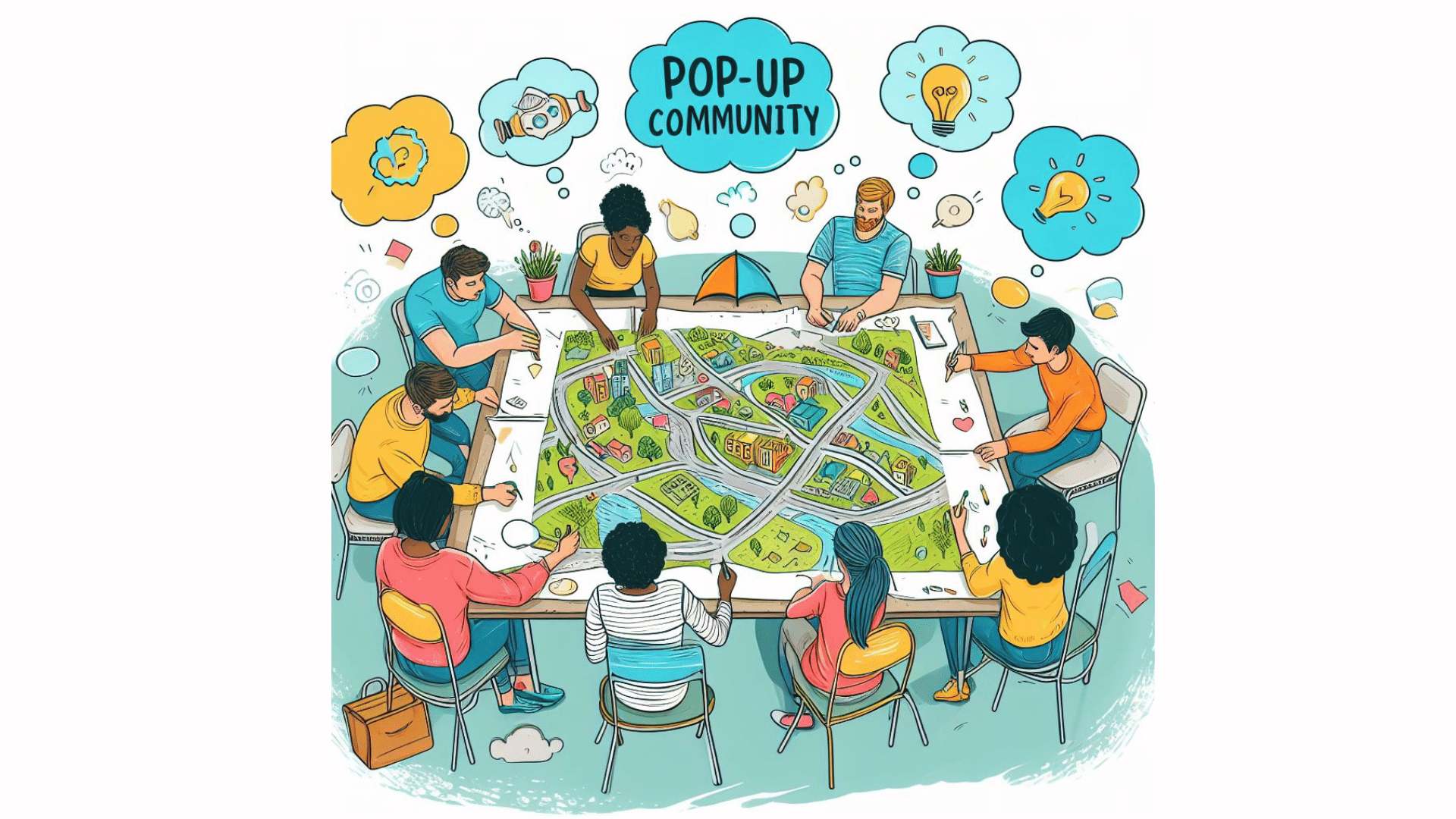How to build a pop-up online community of practice

What is a pop-up online community of practice?
A pop-up online community of practice is a temporary community that is created for people to come together to connect, share, and collaborate around a specific topic or goal, for a defined period of time.
Pop-up communities can be used for a variety of purposes, such as:
- Gathering feedback on a new product or service
- Testing new marketing campaigns
- Supporting the delivery and outcomes of an event
- Conducting research
- Building brand awareness
- Creating a space for customers to support each other
- Hosting an online event
- Facilitating collaboration between team members
Pop-up communities typically run for a few weeks or months, and they can be created using a variety of different platforms, such as social media, forums, or dedicated community platforms.
Benefits of pop-up online communities
Pop-up online communities offer a number of benefits, including:
- Agility: Pop-up communities can be created and launched quickly and easily, making them ideal for organisations that need to gather feedback or insights quickly.
- Cost-effectiveness: Pop-up communities are typically less expensive to create (free in some cases) and maintain than long-term online communities.
- Focus: Pop-up communities can be focused on a specific topic or goal, which can help to generate more in-depth and insightful feedback.
- Engagement: Pop-up communities can be designed to be engaging and interactive, which can help to boost participation and loyalty.
Examples of pop-up online communities
Here are a few examples to show scenarios of where pop-up online communities might be useful:
- An organisation might create a pop-up community to gather feedback on a new product before it is launched.
- A team might create a pop-up community to plan and conduct research, and collate the findings.
- An organisation might create a pop-up group to support or host a virtual conference.
- A non-profit organisation might create a pop-up community to facilitate collaboration between volunteers.
- A course/training provider might use a pop-up community to host an exam allowing candidates to sit the exam in a closed space for them and the hosts only.
- A project team might create a pop-up community to help support the delivery of a peer challenge review where they can easily store and share documentation and materials.
Designing your pop-up online community and how it will vary due to duration and size

When designing your pop-up online community, there are a few key factors to consider:
Duration: How long will your community be active?
This will affect the types of activities and features you need to include. For example, if your community is only active for a few weeks, you may want to focus on discussion forums and virtual meetings. Whereas if your community is active for several months, you may focus your efforts on building a place to share resources, creating document libraries, co-creating documents and building a resource using a wiki or knowledge base.
Size: How many people do you expect to join your community?
This will affect the types of features you need to include, the level of support you need to provide and the guidelines you set for the community. For example, if you expect a large number of members to get involved, you may want to increase your communications and spend more time facilitating the community.
How to seamlessly integrate the collaboration functions into your pop-up community
When integrating your community functions into the overall purpose and objectives of your pop-up community, it is important to keep the following in mind:
What are the goals of your pop-up community?
What do you want your members to achieve? Once you know your goals or objectives, you can choose the right collaboration functions that will help you achieve them. For example, if your objective is to provide support and resources to your members, you may want to include functions such as discussion forums and resource libraries.
What are the needs of your members?
What kind of features and support will your members need to achieve their goals or objectives? Once you understand the needs of your members, you can choose collaborative functions that will meet those needs. For example, if your members are new to a topic, you may want to include tutorials and FAQs to help signpost them to relevant guidance.
Focus on the deliverables and what you will do with them
Before you launch your pop-up community, it is important to think about the deliverables you want to achieve. What do you want your members to create or learn? Once you know your deliverables, you can design your community’s activities and features accordingly.
When your community comes to a close, you may want to collect the deliverables and use them in other ways. For example, you could compile some blog posts, articles, documents, infographics or video series to showcase the great work of the pop-up community and promote it via the relevant channels.
How to close the pop-up community down and celebrate and thank the membership
Once your pop-up community has achieved its goals, it is time to close it down. Here are a few tips:
- Give your members plenty of notice. Let your members know well in advance that the community will be closing. This will give them time to say goodbye and download any deliverables they want to keep.
- Celebrate your successes. Take some time to celebrate the successes of your community. This could involve writing a blog post, hosting a farewell event, or creating a video montage.
- Thank your members. Be sure to thank your members for their participation and support. You could do this by sending them a personal email, posting a thank you message on your community, or creating a social media post.
To sum up, a pop-up online community of practice is a versatile and temporary digital space where individuals can gather to collaborate, share insights, and engage around specific goals or topics for a defined period.
These communities offer numerous advantages, including agility, cost-effectiveness, focused engagement, and interactive features. They provide a dynamic platform for achieving specific objectives and fostering meaningful connections, making them a valuable tool for a wide range of organisations.
Pop-up communities can be applicable across a range of scenarios, from gathering product feedback to facilitating research, hosting virtual events, and supporting collaboration.
The success of such communities hinges on thoughtful design, which depends on factors like duration and size and tailoring your community to meet the unique needs and objectives of your members for maximum impact. Setting clear goals, understanding member needs, and defining deliverables are pivotal to the success of your pop-up community.
Finally, as your community nears its conclusion, it's crucial to close it down gracefully by giving members ample notice, celebrating achievements, and expressing gratitude for their participation and support.
Don’t miss out on being a member of groups that are relevant to you. Register on Knowledge Hub https://khub.net/sign-up to find groups of interest. Can’t find the relevant group? Why not set up a group that works for you and your colleagues?
